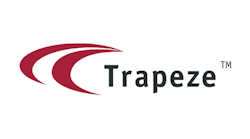The time has finally arrived. After more than three years of public comment, in July, the Federal Transit Administration (FTA) published the Transit Asset Management (TAM) Final Rule, which details what agencies must do to keep their assets in a state of good repair (SGR).
Let’s dive into what the new regulations entail.
About the Final Rule and MAP-21
This new rule applies to any entity that owns, operates or manages public transit capital assets and receives chapter 53 funding. The new rule also establishes SGR standards and performance measures for rolling stock, facilities, infrastructure and equipment.
Transit providers must now set SGR performance targets and report how their capital assets are trending relative to those targets, to the National Transit Database. Both the TAM and National Transit database requirements are set to kick-in starting on October 1, 2016.
So what do you need to know to comply with the new regulations?
4 Steps to Achieving State of Good Repair
The goal of SGR is to maximize the condition of physical infrastructure so that it remains in a proper state to safely perform its intended function.
- Inventory your assets. Start by identifying the databases that track asset information (maintenance system, fixed-asset register, etc.) and determine which has the most comprehensive dataset to use as the start of a new “master” repository.
- Assess the condition of your assets. Set a goal to establish a baseline condition rating for the agency’s assets using the FTA’s five-point scale. Age-based decay curves and attention to the rule’s performance-based condition scores are essential.
- Prioritize capital projects. The rule requires that TAM plans provide a prioritized list of capital projects, ordered by year of implementation. The investment prioritization must also take into consideration any assets that have unacceptable safety risks and any fiscal constraints.
- Implement decision support tools. There are several types of tools available to help define the analytical processes that your agency will use. The leading, large transit agencies understand that software tools will be essential to help track the condition assessments of all their infrastructure, as well as the scoping and prioritization of the capital projects being considered by the agency.
While at first, the new regulations may feel like another regulatory burden, ultimately managing the lifecycle performance (and condition) of your assets in this way is simply the next evolutionary step for asset and maintenance management best practices. With the compliance clock now ticking, the time is right to explore solutions to achieve your TAM goals.
Brett Koenig has 20 years of transportation software consulting experience, including 15 years implementing public transit and rail asset management systems. As the Industry Solutions Manager for the Trapeze Enterprise Asset Management (EAM) solution, he ensures the market viability and product direction of the Trapeze EAM solution.

Brett Koenig | Industry Solutions Manager, Enterprise Asset Management
Brett Koenig is the Industry Solutions Manager for the Trapeze Enterprise Asset Management (EAM) solution in use by more than 80 public transit organizations in North America. Brett has 17 years of experience implementing public transit and rail asset management systems. As the Solutions Manager for EAM, Brett advises customers on industry trends and speaks at conferences about how a transit-focused EAM system can yield real-world efficiencies and measurable cost savings.




